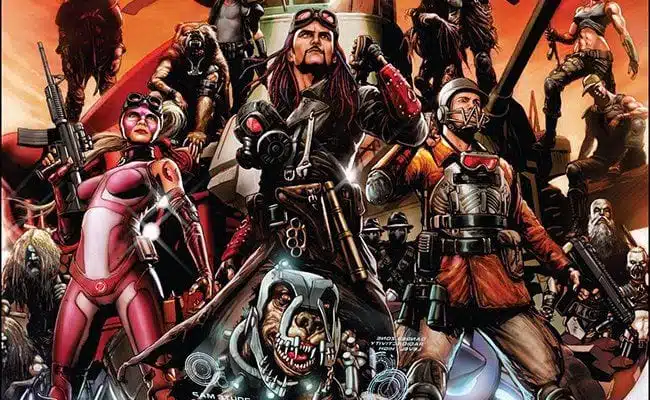
Marvel and DC comics have been restructuring their universes by putting new characters in old costumes, changing continuity, re-imagining origins and undoing everything for a long time now. This might be why DC thought they were good enough to do it with someone else’s universe, the Hannah-Barbera universe. With Scooby Apocalypse, Future Quest, The Flintstones, and Wacky Raceland, DC have potentially eased up on irritating super-heroes fans to see how cartoon fans react when their beloved characters are taken out of their familiar context.
With a short run on television, Wacky Races brought a technicolor group of characters together to drive to the finish line in a series of races full of slapstick comedy, pop culture references and cars with funky designs. In Wacky Raceland, the same characters now live in a post-apocalyptic world where the narrator now approaches them at a moment of need to give them a fresh racing suit to wear and make their car sentient. Instead of gags to make the audience laugh, the characters now have back stories and problems.
Beginning outside the Armageddon Bar, parked cars flirt with one another and complain about their drivers while a man vomits. This sets the tone for the type of comic that goes on to introduce us to its characters, a groups that argues with one another on and off the race track. It’s in the bar where the audience learns about the group dynamic of Dick Dastardly, Penelope Pitstop, Peter Perfect, Lazy Luke and the rest of the gang, as they start a bar fight. That is the present.
The rest of the story is told with flashbacks. Going back to the race from earlier in the day, Penelope Pitstop’s charterer takes a lot of focus in the first issue. She’s shown to be a strong character with the ability to think on her feet. After saving a fellow driver from sandtipedes (giant worm-like beasts that come from underground), she uses one to bring her and her car across the finish line, like Paul riding a sandworm in Dune.
It’s another flashback focusing on Penelope that gives readers the first idea of what kind of world this story takes place in. Escaping from an island while it begins to flood, Pitstop and her car get saved by an unidentified narrator that confesses, “I’ve been watching you both for a while.” She’s given a new suit and her car is given the ability to talk. The driver/car team have also been given the opportunity to be let into Utopia, “a heaven away from the hell” in a world entering its unexplained end times.
Telling the story in flash backs that cut in and out, the story takes on a mysterious quality that is only emphasized by Leonardo Manco’s art work. The pages are drawn in a way that balance action with information. Drawing scenes that takes place on a race track, it’s important that the artist can take the action and pacing of the track and finesse panels that momentarily slow things down to get a look into the characters and the details of their cars. Manco does this with ease and takes on bigger pages that need the audience to be shown and not told, as with the back story to Luke and Blubber bear. Manco also shows off his ability to build pages with details that guide the eyes across the page fluidly.
The story goes back and forth between the race on the Überpass and the fight at the Armageddon Bar to introduce who the drivers are. This helps give a little insight to who Dick Dastardly is. He drives dirty on the course and talks dirty (to Penelope) off it, but there isn’t much else told about him, other than he still has Muttley. But these traits and the as-of-yet lack of a back story make him the kind of character some will love to hate and secretly want to see win, even if just for a minute.
If there’s a true villain in this story, it’s uncertain. It’s uncertain who any of these characters are now that Ken Pontac has written them into a Mad Max world. Dick still has tricks up his sleeves, but Penelope has some depth to her character and Lazy Luke and Blubber Bear are given a back story that begins to unravel when they’re offered the same deal that saved Penelope from drowning. If the narrator is the villain, if Utopia is real, if this is just another parallel universe for DC to tie into its continuity, and if anyone but the readers are watching these races, no one knows.
This isn’t the first time Hannah-Barbera characters have been used outside their milieu. Cartoon Network aired fresh creative visions of Hannah-Barbera characters with Adult Swim shows Space Ghost Coast to Coast and Harvey Bird, Attorney at Law. However bizarre and violent this story gets, it’s done with the kind of comic timing, character development and pacing that makes it compelling enough to return to for answers. If you ever got to watch the original cartoon, there’s the added element of satisfaction in seeing what these classic characters will do now that they’re being written to think and act like adults.

